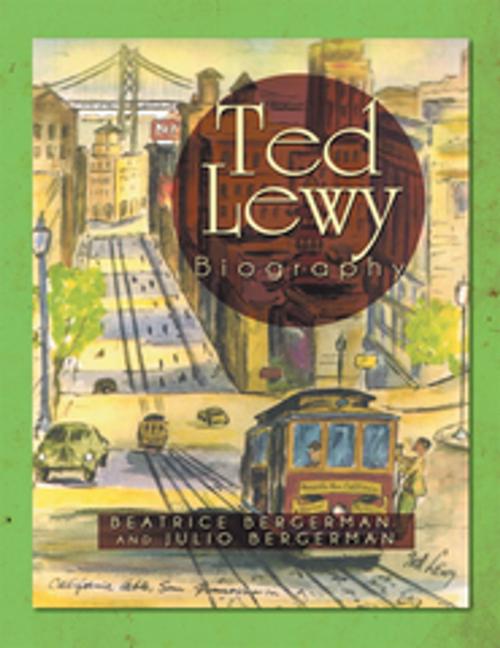Ted Lewy Biography
Biography & Memoir, Artists, Architects & Photographers, Nonfiction, Art & Architecture| Author: | Beatrice Bergerman, Julio Bergerman | ISBN: | 9781483677071 |
| Publisher: | Xlibris US | Publication: | October 14, 2013 |
| Imprint: | Xlibris US | Language: | English |
| Author: | Beatrice Bergerman, Julio Bergerman |
| ISBN: | 9781483677071 |
| Publisher: | Xlibris US |
| Publication: | October 14, 2013 |
| Imprint: | Xlibris US |
| Language: | English |
This book is about my cousin Ted Lewy, who came to San Francisco and fell in love with the city, and the city embraced his colorful paintings. Ted Lewy was born on September 4th in the year 1912, in a small town called Schubin in West Prussia, that was part of the German Empire before the start of World War I. Schubin was less than a small town. It was more like a village with a river crossing right through the middle, with a group of small houses on one side of the river and a two story school with a red roof on the other side. The children had to cross a little wooden bridge every day to go to school. Many times a horse or two, pulling a wagon full of hay was almost occupying the entire bridge. This can be seen on many of the oil paintings that Ted has done from memory of his childhood. On one he even has two children with school packs on their back on the wooden bridge. Might they be Ted and his older brother Arthur ?. After the end of the war, the Allies, at the Treaty of Versailles, established the League of Nations, and the Imperial German Government was made to pay reparation and give up parts of land under their control. This included ceding Upper Silesia to Czechoslovakia, Alsace-Lorraine was returned to France and Prussia to Poland. Thus many Germans, including German Jews, went west to the mainland of Germany to settle there. The family of Ted Lewy also moved back to Germany, to the city of Hamburg. Ted was 7 years old. He had a three year older brother. Arthur and a year younger sister Ruth. In Hamburg, Ted went to one year Grammar and nine years High School. Graduated and went two years to a Business College. After that, attended an Art School for a year and a half. I guess it was the system for that time. After Schooling, he worked for a department store, designing window displays, making posters, and after some time, even managed to setup a small private studio. Some photographs of the German posters still exit.
This book is about my cousin Ted Lewy, who came to San Francisco and fell in love with the city, and the city embraced his colorful paintings. Ted Lewy was born on September 4th in the year 1912, in a small town called Schubin in West Prussia, that was part of the German Empire before the start of World War I. Schubin was less than a small town. It was more like a village with a river crossing right through the middle, with a group of small houses on one side of the river and a two story school with a red roof on the other side. The children had to cross a little wooden bridge every day to go to school. Many times a horse or two, pulling a wagon full of hay was almost occupying the entire bridge. This can be seen on many of the oil paintings that Ted has done from memory of his childhood. On one he even has two children with school packs on their back on the wooden bridge. Might they be Ted and his older brother Arthur ?. After the end of the war, the Allies, at the Treaty of Versailles, established the League of Nations, and the Imperial German Government was made to pay reparation and give up parts of land under their control. This included ceding Upper Silesia to Czechoslovakia, Alsace-Lorraine was returned to France and Prussia to Poland. Thus many Germans, including German Jews, went west to the mainland of Germany to settle there. The family of Ted Lewy also moved back to Germany, to the city of Hamburg. Ted was 7 years old. He had a three year older brother. Arthur and a year younger sister Ruth. In Hamburg, Ted went to one year Grammar and nine years High School. Graduated and went two years to a Business College. After that, attended an Art School for a year and a half. I guess it was the system for that time. After Schooling, he worked for a department store, designing window displays, making posters, and after some time, even managed to setup a small private studio. Some photographs of the German posters still exit.















